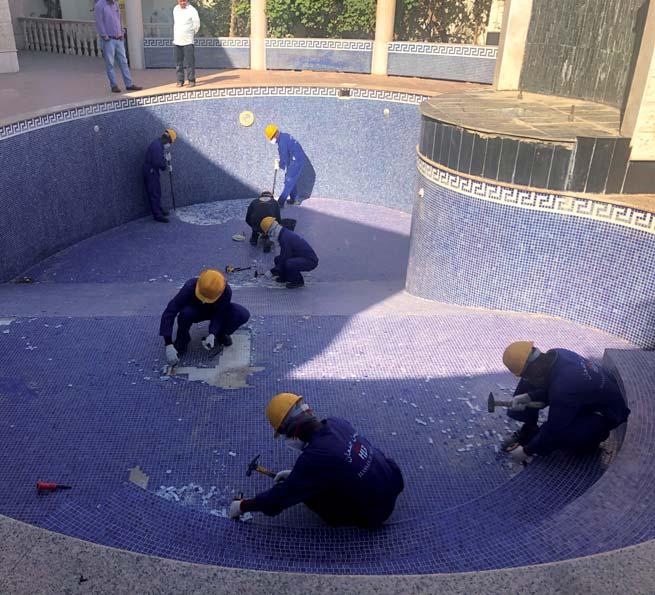INSPECTION LOGBOOK
Coating Inspections – Basic Inspection Practice Massimo Cornago NACE International Certified Coating Inspector, NACE CIP PEER Reviewer
cornago@ipcm.it
I
n our previous articles, we have had the opportunity to analyse all the
specifications and their related documents, such as the Quality Control
documents that an inspector should prepare before, during, and after
Plan (QCP), are used as guidelines for any special inspection requirement
a coating job based on customer procedures. In general, the inspections
and for the definition of the inspector’s responsibilities. At the risk of
that must be carried out in the course of a coating project are numerous
being boring, we would also like to repeat that “the latest reviews, the
and complex, as are the equipment required, the tools to be used, and
latest issues” of international standards should always be indicated and
the regulations to be applied and, above all, assessed and understood in
specified.
detail. These will be described thoroughly in further articles that will be published in the next issues of this magazine.
1. Preliminary inspection responsibilities
We will now start with an introductory summary aimed at familiarising
The Coating Inspector (CI) has specific responsibilities during the phase
with the basic procedures for site inspections (e.g. on materials),
that precedes the coating operations (pre-job activities), including
for preliminary inspections, and for the final tests performed on the
perfectly understanding the client’s specifications and all the associated
paints and coatings applied (e.g. DFT, adhesion, hardness, etc.). These
documents relevant to the project, namely as follows:
procedures are used with both metal (carbon steel, stainless steel, special
• Project drawings, photo and video documents, and floor plans;
alloys, etc.) and cement-based substrates, although different surface types
• Reference documents, such as industry and legal standards, pictorial
call for different preparation and passive protection application systems.
standards, and municipal, state, and government regulations;
For better understanding, we will segment these processes as follows:
• Work plans, quality control plans, time schedules, coating analyses,
1 – preliminary inspection responsibilities;
manufacturers’ technical data sheets (TDS), application instructions, and
2 – surface preparation inspection (for both metal and cement-based
material safety data sheets (MSDS);
materials);
• Order changes and addenda;
3 – paint mixing, dilution, and application activities’ inspection;
• Reports (data logbook).
4 – final post-application inspection.
With such a high amount of papers, it is extremely important for the CI to adopt a proper approach based on their special training – let us
The following recommendations are aimed at guaranteeing the minimum
remember that we are talking about highly specialised professionals,
acceptable quality level for basic inspections. In any case, as already
with technical-inspection knowledge of the highest level. Such approach
mentioned in previous articles, it is extremely important that project
includes as follows:
40
N.35 - 2020 OCTOBER - ipcm® Protective Coatings













